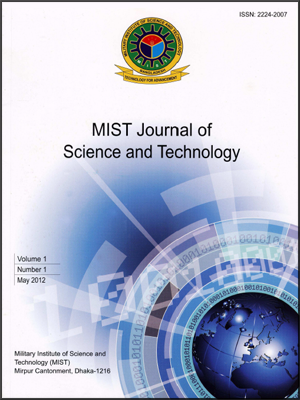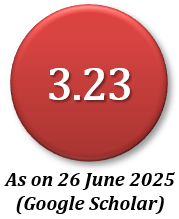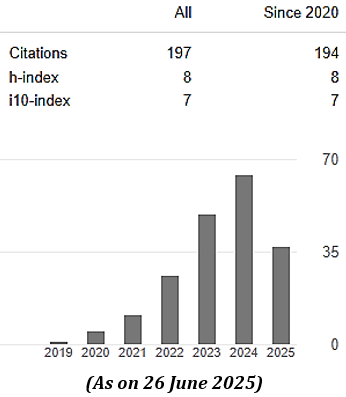EFFECT OF BORE STROKE RATIOS ON OVERALL FRICTION MODEL OF SI ENGINE
Abstract
Bore Stroke ratios are considered one of the most significant impact on friction of SI engine. This paper outlines a
method or model which provides the engine designer with an estimation of overall friction mean effective pressure
due to change of bore stroke ratios in spark-ignition internal combustion engines. The general effect of overall
friction on engine performance was examined during normal working conditions. A parametric study was performed
covering wide range of dependent variables such as engine speed, change of bore stroke ratios with and without
changing engine volume. Different bore stroke ratios are used for three different cylinder condition I model, such as,
at constant volume, at variable bore and volume (constant stroke), and lastly at variable stroke and volume
(constant bore). Various average friction coefficients are used considering oil viscosity property, film thickness,
temperature effect and roughness of the surface. At low speed with lower bore stroke ratio and at high speed with
higher bore stroke ratio, constant bore model gives less friction irrespective of compression ratio. At low speed,
most of the friction is due to the piston rings, and at higher speeds, the majOrity of the friction is from the piston skirt.
Downloads
References
Sons, Singapore, 2004.
[2] BISHOP I. Nf "Effect of Design Variables on Friction and Economy", SAE, pp. 334-379, 1964.
[3] Patton K. J., Heywood J. B. , Nitschke R. G. , " Development and evaluation of a friction model for spark
ignition engines", SAE Technical paper, pp. 1-21 , 1989.
[4] Heywood J. B., Internal combustion engine fundamentals, McGraw-Hili Book Company, Singapore, 1988.
[5] Richardson D. E., "Review of power cylinder friction for diesel engines", ASME, Vol. 122, pp. 506-519, 2000.
[6] Lumley J. L., Engines an Introduction, CAMBRIDGE UNIVERSITY PRESS, UK, 2000.
[7] Pulkrabek w., Engineering fundamentals of the internal combustion engine, Prentice Hall, New Jersey, 2004.
[8] Mufti R. A., Priest M., "Experimental Evaluation of piston-assembly friction under motored and fired conditions
in a gasoline engine", ASME, Vol. 127, pp. 826-836, 2005.
[9] Abu-Nada E. , AI-Hinti I., AI-Sarkhi A. , Akash B. , "Effect of piston friction on the performance of SI engine: A
new thermodynamic Approach.", Journal of Engineering for Gas Turbine and Power, Vol. pp. 801-808, 2008.
[10] Blair G. P., Design & Simulation of Four Stroke Engines, SAE, Pennsylvania, 1999.
MIJST follows the open access policy.

This work is licensed under a Creative Commons Attribution-NonCommercial 4.0 International License. This allows anyone to copy, share, distribute, and modify the work for non-commercial purposes, where the original work and source should be properly credited.
















